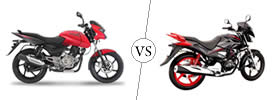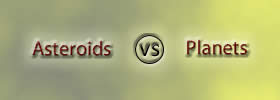Difference between Bacteria, Virus and Fungi
Key Difference: Bacteria are single celled and prokaryotic organisms. They replicate in an asexual manner. They can be harmful as well as beneficial; it depends upon the type of Bacteria. On the other hand, viruses are non living pathogens and are acellular. Viruses also need host cells to reproduce. Most of the Viruses do not serve any useful purpose. Fungi are living organisms from the large group of eukaryotic organisms. A fungus can be either a single celled or a very complex multicellular organism.
 Bacteria are single cell plant organisms and they are very small in size, measuring about a few microns in size (micron=0.001mm). Bacteria are different from other cellular forms as they do not have any nucleus. They can be harmful as well as beneficial. They help in digestion and also keep the number of bad bugs under control.
Bacteria are single cell plant organisms and they are very small in size, measuring about a few microns in size (micron=0.001mm). Bacteria are different from other cellular forms as they do not have any nucleus. They can be harmful as well as beneficial. They help in digestion and also keep the number of bad bugs under control.
On the other hand, Virus is a mobile genetic material that is enclosed in a protein or a fatty shell. They are smaller than Bacteria ranging between .jpg) (0.1 to 0.3 microns) in size. They were discovered just before 1900, and were known as filterable viruses, due to their small size. A debatable issue is regarding their status as living or non living entities. This is due to the fact that they consist of merely nucleic acid that is wrapped in a coat of protein.
(0.1 to 0.3 microns) in size. They were discovered just before 1900, and were known as filterable viruses, due to their small size. A debatable issue is regarding their status as living or non living entities. This is due to the fact that they consist of merely nucleic acid that is wrapped in a coat of protein.
 Fungi are living organisms from the large group of eurokaryotic organisms. The kingdom of fungi includes mushrooms and puffballs, yeasts and moulds. Most of the species of fungi are saprotrophic, they decompose dead matter. However, some are parasites and some others are mutualistic.
Fungi are living organisms from the large group of eurokaryotic organisms. The kingdom of fungi includes mushrooms and puffballs, yeasts and moulds. Most of the species of fungi are saprotrophic, they decompose dead matter. However, some are parasites and some others are mutualistic.
Some of the differences are listed below:-
|
|
Bacteria |
Virus |
Fungi |
|
Structure |
Most bacteria consist of a ring of DNA surrounded by a cellular machinery, contained within a fatty membrane. |
They consist of little more than a small piece of genetic material surrounded by a thin protein coating. Some are also surrounded by a thin and fatty envelop. |
A typical fungus consists of the hyphae, which form the fungal body. These hyphae are microscopic walled tubes or filaments that are lined with plasma membrane and contain cytoplasm. |
|
Cell membrane |
Present below the cell wall |
No cell membrane |
Present |
|
Genetic Material |
DNA |
DNA or RNA |
DNA |
|
Size |
Medium |
Smallest |
Largest |
|
Type |
Intercellular organisms |
Intracellular organisms |
Either unicellular or multi-cellular. |
|
Shape |
Come in three different possible shapes Cocci = sphere shape Bacilli = rod shape Spirella = spiral shape |
Viruses come in all different shapes.
Most common shape is icosahedral, some are helical shaped.
Some viruses are shaped like a space ship. They are called bacteriophages. |
Most fungi come in thread-like strands, called hyphae (collectively called mycelium) |
|
Host |
Can grow on non-living surfaces |
Needs a living host, like a plant or animal |
Can live on its own |
|
Usefulness |
Some are useful |
Mostly are harmful |
Many fungi are beneficial |
|
Antibiotics |
Kill bacteria |
Cannot kill viruses |
Do not effect |
|
Diseases Caused |
Cholera, tuberculosis, lyme disease, pertussus, salmonella, staph infections, strep throat, leprosy, tetanus, diptheria, E.coli, flesh eating (necrotizing fascitis) rickets, etc. |
Flu, colds, HIV/AIDS, hepatitis, west nile, measles, herpes, shingles, chicken pox, monkey pox, polio, smallpox, ebola, and some cancers (epstein-barr) are just a few viruses that affect humans and animals |
Allergic, ronchopulmona, aspergillosis, spergilloma, aspergillosis, athlete's foot, dermatophyte, dermatophytid, dermatophytosis, etc.
|
|
Source of Energy |
Seize energy from the same essential sources as humans, including sugars, proteins, and fats. |
Seize materials and energy from host cells by hijacking cellular machinery |
They use pre-existing carbon sources in their environment and use the energy from chemical reactions to create the organic compounds they need for energy and growth. |
|
Living |
Yes |
Characteristics of both living and non-living |
Yes |
|
How they are transmitted |
Direct contact with an infected person Contaminated food or water (Salmonella, E.coli) Dirty objects (tetanus) Infected animals (rabies) |
By direct contact with infected individuals By contact with contaminated objects (such as toys, doorknobs) By inhalation of virus-laden aerosols. (think sneezes) By animals that act as hosts (vectors) |
Transmitted through a number of ways, which include transmission by air and contact. |
|
Reproduction |
Bacteria reproduce through binary fission, they split into two cells. |
Virus injects itself into a living cell Protein coat is discarded Hereditary material takes over the cell’s activities Virus reproduces and the cell fills Cell splits open Viruses leave the cell and attack new cells |
Reproduction takes place in multiple ways like Budding Fragmentation Production of spores asexually Production of spores sexually |
|
Motility |
Move through the environment using a structure known as the flagellum. |
Viruses do not have structures and thus cannot move on their own. |
Typically, fungi are non-motile organisms. |
Images Courtesy: assignmentpoint.com, pc.maricopa.edu









Comments
Thought it was crap
Likea Boss
Thu, 03/13/2014 - 16:40
its good but idk wat
amanda mohammed
Sun, 03/09/2014 - 02:26
Pages
Add new comment